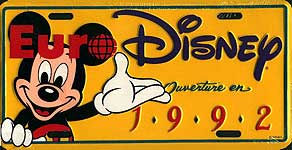
Introduction
The information presented here is based on my collection and what knowledge I have gained in collecting the several hundred plates that make up my collection. The information is subjective at best, since there is little factual information available. The Disney Company doesn't seem to keep any information, historical or otherwise on the license plates they sell or have sold. Even the Disney Archives in California doesn't have any data on the plates.
One possible reason for the lack of data is that there is so much Disney merchandise available to collect, that the task of keeping such data about a specific collectible becomes a burden. And, for the most part, there doesn't seem to be a big demand for license plates, as there is for other Disneyana collectibles, hence little demand for any data.
Consumer and collector interest in license plates is so low that most of the Disney theme parks no longer carry them as part of the merchandise they sell. Currently, only Walt Disney World (WDW) in Florida sells license plates on a semi-regular basis.
This "history" makes reference only to the full size automobile novelty license plates sold world wide by the Disney Company or those plates produced for Disney corporate holdings, such as The Mighty Ducks or Anaheim Angels sports teams.
My Collection

I started collecting Disney license plates in 1992 when I noticed the artwork on the first Paris Euro Disney license plate. Oddly enough, I found that plate during a visit to Disney-MGM Studios (now Hollywood Studios) at WDW in May of that year. I also saw several other Disney license plates displayed with the Euro Disney plate. The artwork on the plates was incredible! I was instantly hooked. The plates were very inexpensive at the time to purchase, which made them the perfect collectible. I purchased the Euro Disney plate for $3.95.
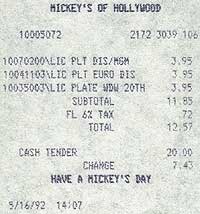
I was surprised to find the Euro Disney plate at Disney-MGM (now Hollywood Studios). The Cast Member (Disney employee) who sold me the plate told me that they had received the plate in error, but were told to go ahead and sell them anyway.
During each of my following annual visits to Disney World, I spent time hunting plates for my collection. By 1999, I had only amassed 24 plates. I kept thinking that there had to be plates issued prior to 1992, but I sure couldn't find a source nor could I find anyone with information about the plates. Several Disney Cast Members I talked to could remember selling older plates, but that was about all they could remember about them.
The collection didn't grow much at all until 1999, when I discovered that Disney license plates were sold on e-Bay, an Internet auction site. Finally I had found a source for older plates.
Through e-Bay, I met several collectors, one of which had put together a list of Disney license plates. Lou Smith of Whittier, California, graciously provided me with a copy of his list. I finally had some idea of just how many plates were available, far more than the 24 plates in my collection.
I continued to search the Internet for more information, but still didn't find anything. I took the basic information contained in Lou Smith's list and created a web site catalog of Disney license plates.
Through my web site I have met many collectors, who have contributed to it, sharing images and data.
Disney License Plates
The first Disney license plates came about for the opening of WDW in 1971. Prior to the opening of the Magic Kingdom Park, Disney produced a commemorative plate announcing the opening date. Florida was the perfect place to display a commemorative plate on a vehicle, since the state only required one plate to be displayed on vehicles registered there.
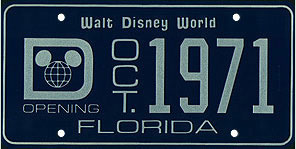
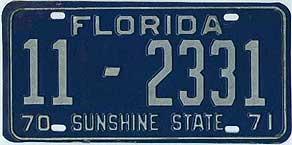
The opening WDW plate was sold at the Preview Center in the year before park opening. The WDW Preview Center was open from January 10, 1970 to September 30, 1971. It wasn't long before the plate proved to be troublesome. The plate, which had a blue background with white lettering, was very similar in style to the 1970-1971 State of Florida official license plate. The similarity was causing enough problems that Disney withdrew the plate from sale. Another opening day plate was created, but with a green background, eliminating any similarity.
The problems with the first Disney license plate may have caused Disney to be hesitant in producing more plates. Very few plates were made after the opening of the Magic Kingdom at Disney World. It wouldn't be until 1981, for the opening of the second park, Epcot Center, at Disney World, that plates would be made on a regular basis.
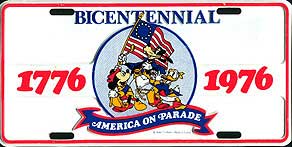
1975 brought about a unique license plate to celebrate "America on Parade", a special celebration at both Disneyland and Walt Disney World for America's Bicentennial. The plate was sold at both parks in 1975 and 1976, making this the first souvenir plate sold at Disneyland. The plates sold at either park were identical, neither carrying park logos. This plate is not considered to be Disneyland's first official plate, since it was not specific to Disneyland.

In 1985, Disneyland in California sold its very first official "Disneyland" license plate. The first official plate featured Disneyland's 30th anniversary. In 1986 Disneyland produced a license plate featuring Mickey, the Sleeping Beauty Castle and the year "1986". This year series of plates lasted until 1990. Only a few more plates were made for Disneyland, the final one coming in 1995 for the 40th anniversary of Disneyland.
California unlike Florida requires two plates to be displayed on vehicles registered there. This was probably the most likely reason that the Disneyland plates never caught on big in California. For the lack of consumer interest, Disneyland discontinued license plates.
In 2001, Disneyland once again started selling license plates on a limited basis. From 2001 to 2003 there were five new plates released.
A warning label can be found on most of the Disneyland and some of the early Disney World license plates. The label points out the prohibited use of souvenir plates in lieu of official license plates in most states, including California.
Disney World however, continued in commemorating anniversaries and new park openings with license plates. The 1980's brought several different license plates out each year.
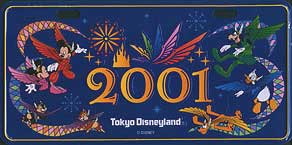
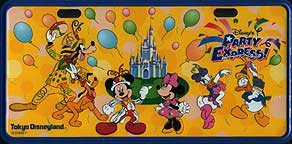
In April of 1983, Tokyo Disneyland opened in Japan. Tokyo didn't issue a license plate until 1988 and it was a limited issue for the 5th anniversary birthday party. In late 2000 and in early 2001, Tokyo produced several plates, two to commemorate the expanded "Tokyo Disney Resort", one to commemorate the year 2001 at Tokyo Disneyland and, "Party Express", to commemorate Walt Disney's love of locomotives.
Still, even in the 1990's, Disney World license plates seemed to sell well enough for them to continue to merchandise them. New plates were being released on a regular basis each year.
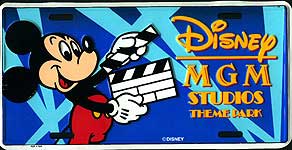
Disney World in 1990 began making commemorative license plates for Cast Members. These were exclusive plates, given or sold only to Cast Members. These plates were so exclusive at times; they were given only to Cast Members who worked in specific areas or parks. The very first Cast Member plate was made for the newest park at WDW, Disney-MGM Studios (now Hollywood Studios). Most of the plates were distributed through Cast Activities at the Company D Store, an exclusive store for Cast Members. The Company D store at Disneyland opened in 1988 and at the Team Disney building in Disney World in 1991. A second store at Disney World in Epcot opened in 1992.
Cast Member plates weren't intended to end up in the hands of the public. But, due to the vast number of Cast Members at Disney World, it is easy to find them for sale through several outlets. Disney frowns upon Cast Members selling exclusive Cast Member items, but they have very little control over it.
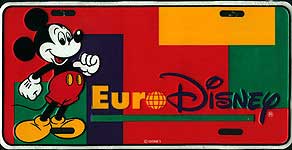
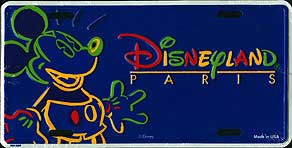
1992 brought about the opening of Euro Disney in Paris, France. Euro Disney's pre-opening plate was unique in that for the most part, seemed to be distributed and sold in the U.S. Disney parks. Seven plates were produced and sold under the Euro Disney name between 1992 and 1993. In 1994, Euro Disney changed its name to Disneyland Paris. Plates were created for the park under the new name and for the Disney resort hotels at the park. Disneyland Paris, as Disneyland California had learned in the U.S., found that the plates weren't very successful in France either and soon discontinued them.
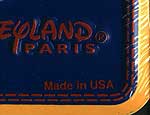
It is intriguing to see that most of the Disneyland Paris plates carried the "Made In U.S.A." label. The Euro/Disneyland Paris plates are some of the most interesting Disney license plates produced. The artwork is very distinctive and unique, making them the most difficult and expensive plates to collect.
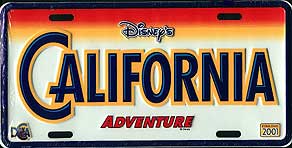
A surprise release from the Disneyland Resort in California appeared in January 2001. A pre-opening plate for the new theme park, the California Adventure, was released. The park opened on February 8, 2001.
Following with the 2001 releases from Tokyo Disneyland and the Tokyo Disney Resort, Tokyo's new park, DisneySea, in July of 2001 released twelve plates prior to the opening of the park on September 4, 2001. The plates commemorate the grand opening, all of the seven lands and three areas in the park. All but one of the new plates carried a "Made In China" label. These plates are of high quality and have superior graphics.
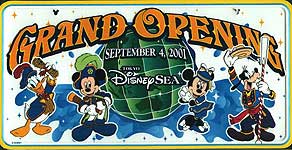
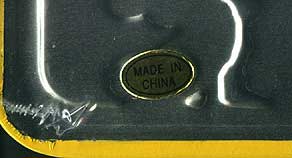
Most of the Tokyo plates, including the new DisneySea plates have "mouse ear" bolt holes. An interesting feature, but they are made that way to discourage the use of the plates on vehicles. Japanese regulations are rather strict on the use of "unofficial" license plates on vehicles. The "mouse ear" holes are made small enough to make it difficult to attach them to vehicles, but allow hanging or mounting on other surfaces.
Another unique feature found on Tokyo plates is the sticker or sheet on the back of the plates. The sheet contains mounting instructions and product safety warnings as well as restrictions on use of the plate.
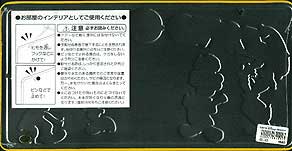
Besides the plates commemorating the major parks at WDW, WDW plates have been issued for the water parks, Pleasure Island, Downtown Disney and several unique projects and films. Plates have also been issued for The Walt Disney Studios, Disney Vacation Club resorts, The Disney Cruise Line, and for recreation and sports.
Between 1993 and 2005, Disney owned two major league sports teams, The Anaheim Angels and the Anaheim Mighty Ducks. In 1993 Disney formed Anaheim Sports, Inc., wanting to add to its entertainment attractions in California and in June of that year started the Mighty Ducks hockey franchise. The first Mighty Ducks license plates that were produced carried the Disney copyright. Later plates were sponsored by The National Hockey League and no longer carried the Disney copyright. In February 2005, Disney sold the Ducks franchise for a reported $50 to $60 million dollars, which is about the same amount ($50 million) Disney paid for the team to join the National Hockey League as an expansion team.
Disney bought into the California Angels baseball team in 1996 and later renamed them to the Anaheim Angels, as they took over controlling interest. Angels' plates never carried the Disney copyright since Major League Baseball already sponsored them. In May 2003, Disney sold the Angels franchise for $184 million to divest themselves of a not so profitable investment.
Golf was another sports venue for license plates. Beginning in 1971 the first Walt Disney World Golf Classic was held and the tournament has continued every year since then. In 1985 Oldsmobile became a co-sponsor, and remained as co-sponsor through 1997. National Car Rental became the co-sponsor in 1998 and the tournament is now known as the National Car Rental Golf Classic.
Past tournaments were known as: Walt Disney World/Oldsmobile Classic (1985-97), Walt Disney World Golf Classic (1982-84), Walt Disney World National Team Championship (1974-81), and the Walt Disney World Open Invitational (1971-73).
The Golf Classic has been an individual tourney each year except for 1974 to 1981 when it hosted PGA's two-man National Team Championship.
Golf plates were issued to volunteer Cast Members who worked at the tournaments. Tournament participants also received a different colored version of the same plate that was issued to the volunteer Cast Members for that year's tournament. The "Classic Club" also issued plates to its members. The "Classic Club" allow their members to play golf alongside the pros during the major tournaments.
In 2002, Disney started using window stickers/decals in place of the golf license plates to identify volunteers and participants. 2001 marked the last of the golf volunteer and participant license plates.
Because of the exclusive events and limited distribution, these plates rank with the Euro/Disneyland Paris plates, in difficulty to find and the cost to collect.
Recent Activity

2008 brought a slow-down in Disney license plate production. There were only five Disney license plates produced during 2008 and they were all released between August and December of that year. For comparison, in 2006 there were ten Disney license plates released and in 2007 there were seven released. In August of 2008 I sent a message to Disney Merchandising asking when they were going to release any new license plates or if they had stopped producing them altogether. Here is the reply I received:
From: "Walt Disney World Mail Order"
To: "Steve Garner"
Sent: Tuesday, August 19, 2008 10:12 AM
Subject: Re: Merchandise: Disney License Plates
Dear Steve Garner,
Thank you for taking a moment to share your thoughts with us. We make every attempt to provide our guests with a broad range of products and merchandise. Unfortunately, we are limited as to the scope of what we are able to carry at any given time due to the huge diverse nature of our company and its history. We discontinue and introduce new merchandise as often as we can in an attempt to meet the many requests for specific types of products. When we receive comments such as yours, they are shared with various members of our organization. The input we receive from our guests lets us know what we are doing right and what we can do better. We appreciate your observations and will share them at the appropriate levels. It's hard to say when or if any new license plates may be released. You are more then welcome to check back with us in the future because as always our inventory is subject to change.
Thank You,
Rhonda 08/19/08
Walt Disney World
Merchandise Guest Services.
Ironically, on the very same day this e-mail response was received, the first 2008 Disney license plate (DW-GN-31) plate was discovered on e-Bay. 2009 did not make any headway for increasing the number of plates released. There were only three plates were released for 2009. It appears that Disney has switched to producing license plate frames since there have been a total of fourteen frames released for 2009. Eight of those frames were released by the Disneyland Resort, with two being released by Walt Disney World. Two Cast Member exclusive frames were also released. For 2010 there were three new plates and three new frames released. In 2011 there were six new plates and eight new frames.
The future of Disney license plates is unclear as the demand for these items continues to decline.
Material and Production
Since the first plates were produced, most of them were made of aluminum. They were stamped or "embossed" creating a raised look, simulating the look of registered official vehicle license plates. The aluminum used was between .022 and .032 gauge in thickness.
The exception seems to be the golf and sports plates. Most all of them were made of plastic varying in thickness from 1/16" to 1/8".
Plastic plates now appear to be replacing aluminum plates and are becoming more prevalent. This might be due to the higher cost of producing the aluminum stamped plates. The art and graphics on the plastic plates seems to be more detailed than what could be done on aluminum plates. Plastic plates range in thickness from 1/32" to 1/8".
Whether aluminum or plastic, the plates are made to approximate the size of official license plates, which is about 6" X 12". The plates have attachment holes, allowing them to be attached to a vehicle.
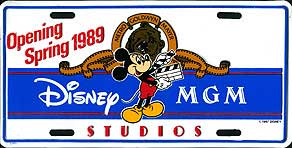
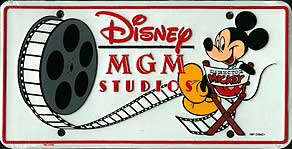
The attachment holes come in two different styles, bolt slots and bolt holes. The slots are a widened hole to allow flexibility in attachment to different styles of license plate holders. The bolt holes are not as flexible and may require widening if they are attached to vehicles. Aluminum plates generally have slots, while plastic plates generally have bolt holes.
At the time of writing this "history", there isn't any information available on who actually manufactures these plates. However, there should be at least one manufacturer in the U.S., since the Disneyland Paris plates carried the "Made in U.S.A." label!
Plate ID Number
Most of the aluminum plates have an ID number printed on them. The ID Number is usually found on the front of the license plate in the lower left hand corner. Some of the license plates have two versions that exist, one with and one without plate ID numbers. However, there are aluminum plates that do not have an ID number. Plastic plates do not have ID numbers at all.
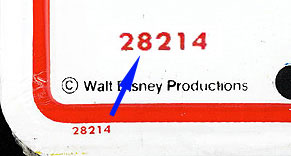
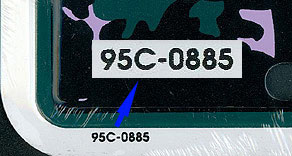
The ID number appears to be a number assigned by the manufacturer and not a number assigned by Disney. Similar style ID numbers appear on non-Disney aluminum plates. There are two styles of ID numbers. The first style, which is seen on older issued plates, is a string of numbers, up to 5 digits. The second style that is seen on the newer plates is a hyphenated combination of letters and numerals.
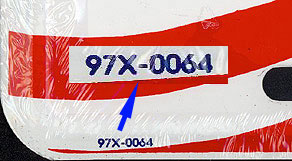
It is believed that the first two numbers of the newer ID number are the year of manufacture. The year of manufacture is followed by a letter, (letters A through L and X are used), which seems to be the month in which the plate was made. "A" would equal January and "L" would be December. "X" appears to be used for plates that are continually manufactured and not a one-time production like most Disney plates are, and therefore, no month designation is defined.
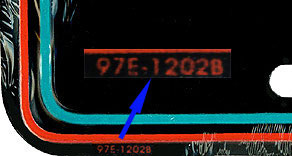
The month letter is then followed by at least 4 numbers, which seems to be a chronological sequence of manufacture. There may be a suffix letter following the chronological sequence number. The purpose of the suffix letter is not clear.
Availability
As of February 29, 2024 there are 832 known Disney license plates. 493 of the 832 license plates originated from Walt Disney World. "Known" is the operative word here. There are always plates being discovered that were not known or available to the general public at the time of production or release. From time to time Disney produces specialty license plates.

Specialty or special occasion license plates (such as the Polynesian 25th Anniversary) are not intended for sale to the public on or off property, but are souvenirs solely for resort guests or a selected group. These specialty plates are usually requested or ordered by the upper management staff of the celebrating area or resort for a specific event. Therefore, many of these plates remain unknown to collectors.
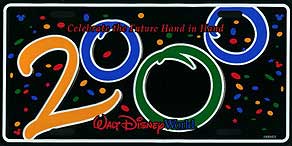
In 1999 Disney created a 2000 year plate to celebrate the new millennium. Initially it was distributed in October 1999 to travel agents with a promotional package to launch the new millennium at WDW. In September 2000, it was sold to the public at the Disney Outlet store, Character Corner.
You can also find prototype plates that were made for design approval, prior to production of the actual plate. Many of these prototype plates were sold to Cast Members at the Company D Store. Most of the prototype plates are flat, not stamped, but there are a few prototypes that are stamped.
The currently available plates vary in cost, but average about $8.00 to $10.00 each for aluminum plates, making them still affordable to collect. However, older issues and limited editions do command a premium. Tracking down the older issues keeps collecting these plates interesting. Even due to the limited popularity, sometimes finding the current releases seems to be a challenge! The purchase price of a plastic plate averages about $6.00 to $8.00, making them look even better to consumers and collectors. Hopefully, Disney will keep the plates coming.
In November of 2017, Merchandise Guest Services stopped taking phone orders for merchandise and now is only selling "selected" merchandise on-line at Shop Disney websites and computer applications to those "Guests" not visiting the parks.
Conclusion
Disney license plates provide a historical look at the company and theme parks, since many of the plates that are produced commemorate an anniversary or opening of a park. They provide guests with a souvenir of the parks they visited or the resorts that they stayed at. If you purchase them at the parks, they are a very inexpensive Disney collectible. They offer many challenges in collecting them, which probably makes them one of the unique Disneyana items.
I would appreciate knowing if you find errors in this "history" as well as hearing your opinions and facts that I may have overlooked. I would like to make this "history" as accurate as possible.
Steve Garner